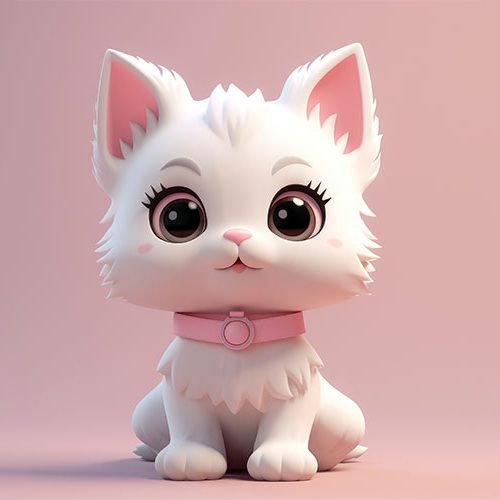You might be surprised to know that the average American buys more than 20 shirts per year, yet many struggle to identify the type of fabric they’re made of.
Understanding shirt fabric types is crucial for making informed purchasing decisions and ensuring comfort and durability.
As you explore the world of fabric guide for shirts, you’ll discover a variety of materials, each with its unique characteristics, advantages, and uses.
From the breathability of cotton and linen to the luxury of silk, knowing your options can elevate your wardrobe and enhance your style.
The World of Shirt Fabrics: A Case Study Overview
Fabric selection plays a significant role in determining the comfort and durability of your shirts. With numerous shirt material options available, understanding the characteristics of each fabric is essential for making informed wardrobe choices.
Why Fabric Selection Matters for Your Wardrobe
Choosing the right fabric can significantly impact your overall satisfaction with a shirt. Factors such as breathability, softness, and wrinkle resistance are all influenced by the type of fabric used. For instance, cotton is known for its breathability and comfort, while synthetic fabrics like polyester offer durability and ease of care.
| Fabric Type | Breathability | Durability |
|---|---|---|
| Cotton | High | Medium |
| Polyester | Low | High |
| Linen | High | Medium |
Our Research Methodology and Testing Criteria
Our research involved a comprehensive analysis of various shirt fabrics, evaluating factors such as comfort, durability, and performance. We conducted wear tests and gathered feedback from participants to gain a deeper understanding of different shirt fabrics and their suitability for different occasions.
Cotton: The Versatile Classic
Among various fabrics used in shirts, cotton remains a timeless favorite for its breathability and versatility. You appreciate cotton shirts for their comfort and durability, making them a staple in many wardrobes.
Properties and Characteristics of Cotton Shirts
Cotton shirts are known for their breathability and ability to absorb moisture, keeping you cool in warm conditions. Let’s dive deeper into these characteristics.
Breathability and Moisture Absorption
Cotton allows for excellent airflow, which helps in regulating body temperature. Its moisture-wicking properties ensure that you stay dry and comfortable, even during active use.
Durability and Aging Characteristics
Cotton shirts are generally durable and can withstand repeated washing and wear. However, their longevity depends on the quality of the cotton and how well they are cared for. Proper care can significantly extend the life of your cotton shirts.
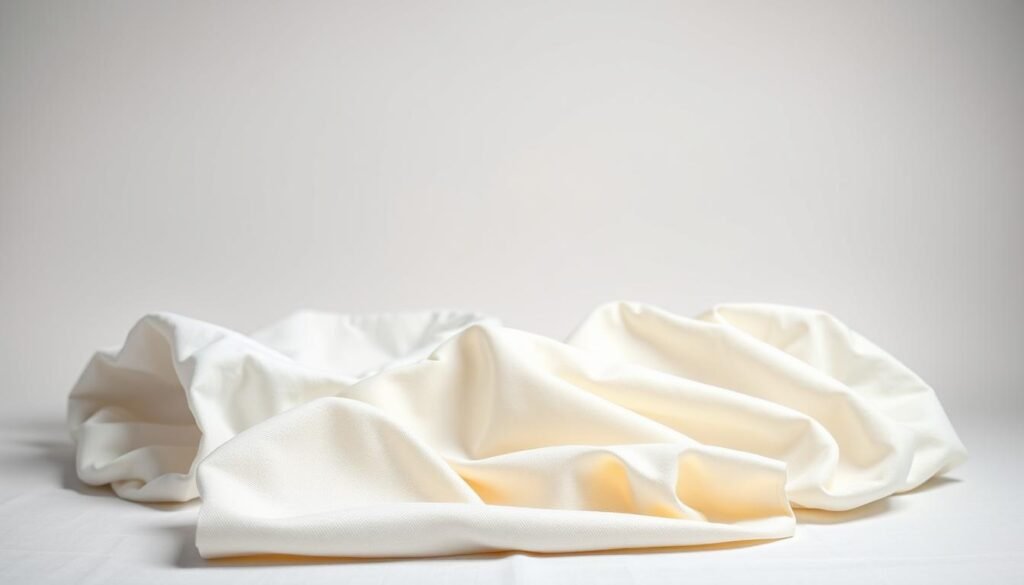
Different Types of Cotton: Pima, Egyptian, and Supima
Not all cotton is created equal. Pima, Egyptian, and Supima cotton are considered premium due to their extra-long staple fibers, which make them stronger and softer. These types of cotton are ideal for high-quality shirts that you want to last.
Best Uses and Care Instructions
Cotton shirts are versatile and suitable for various occasions, from casual daily wear to more formal events. To keep them looking their best, it’s essential to follow proper care instructions, such as washing in cold water and avoiding high heat when drying.
By understanding the properties and types of cotton, you can make informed choices about your shirt purchases and enjoy the comfort and durability that cotton has to offer.
Linen: The Breathable Summer Essential
For those seeking a breathable and stylish shirt fabric, linen is an excellent option. Linen shirts are renowned for their cooling properties, making them a staple for warm weather.
Unique Properties of Linen Fabric
Linen fabric is distinguished by several unique properties that make it ideal for summer wear. Its breathability is unmatched, allowing for excellent airflow that keeps you cool.
Thermal Regulation Capabilities
Linen’s natural fibers facilitate thermal regulation, ensuring that you stay cool in the heat and comfortable in varying temperatures.
Texture and Feel Against Skin
The texture of linen is another significant advantage. It has a soft, natural feel against the skin, enhancing comfort during extended wear.
Wrinkle Resistance and Durability Factors
While linen is known to wrinkle, modern treatments and blends have improved its wrinkle resistance. Linen shirts are also relatively durable, withstanding repeated washing and wear well.
Seasonal Appropriateness and Styling Tips
Linen shirts are perfect for summer. You can style them casually with shorts or more formally with linen pants for a cohesive, stylish look. For a relaxed, beachy vibe, pair a linen shirt with lightweight, flowing pants or a skirt.
When choosing linen shirts, consider the weave and weight of the fabric. A lighter weave is ideal for hotter days, while a slightly heavier linen can be suitable for cooler summer evenings.
Silk: Luxury in Fabric Form
Silk, known for its smooth texture and lustrous appearance, is a fabric that exudes luxury and refinement. When considering silk shirt fabric properties, it’s essential to understand its natural benefits and challenges.
The Natural Properties of Silk Shirts
Silk is renowned for its natural temperature regulation, keeping you cool in the summer and warm in the winter. This property makes it an excellent choice for shirts across various seasons.
Temperature Regulation Benefits
The unique structure of silk fibers allows for excellent airflow and moisture wicking, contributing to its temperature regulation benefits. This means you stay comfortable in your silk shirt, regardless of the weather.
Drape and Appearance Characteristics
Silk shirts are prized for their elegant drape and luxurious appearance. The fabric’s smooth texture and subtle sheen add a touch of sophistication to any outfit.
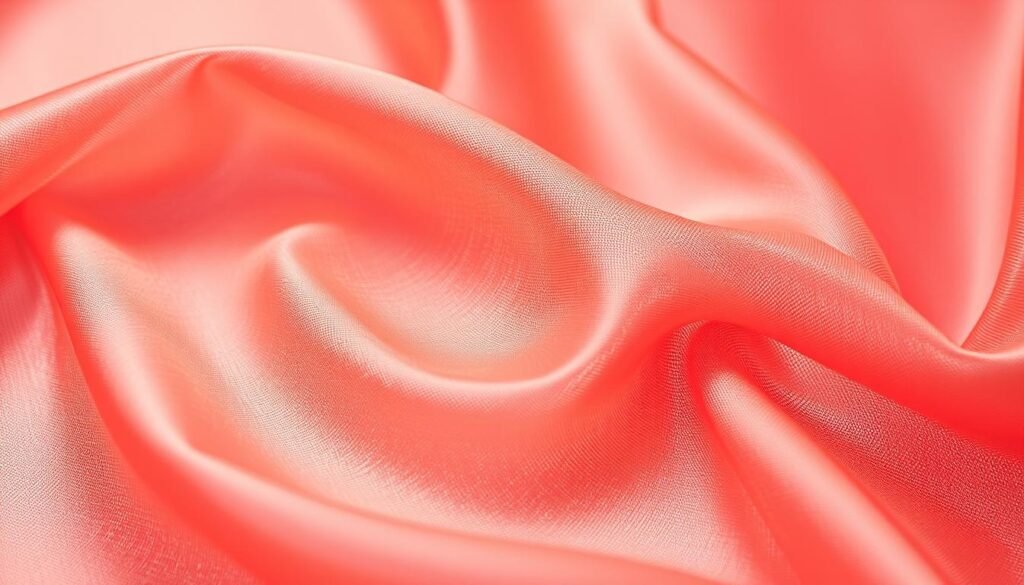
Durability and Maintenance Challenges
While silk is luxurious, it’s also delicate and requires careful maintenance. Understanding the challenges of caring for silk shirts is crucial to enjoying them long-term.
| Care Aspect | Silk Shirt Care |
|---|---|
| Washing | Hand wash in cold water or dry clean |
| Drying | Reshape while wet and dry flat away from direct sunlight |
| Ironing | Use a low-temperature setting and iron on the reverse side |
When to Choose Silk for Your Wardrobe
Silk shirts are ideal for special occasions or as a statement piece in your wardrobe. Their luxurious feel and appearance make them perfect for events where you want to make a stylish impression.
Understanding the silk shirt fabric properties and how to care for them can enhance your appreciation for this luxurious fabric, allowing you to make informed choices when adding silk shirts to your wardrobe.
Polyester and Synthetic Fabrics: Modern Alternatives
When it comes to shirt materials, polyester and synthetic fabrics offer a range of modern alternatives to traditional natural fibers. You might be considering these options for their unique properties and benefits. Synthetic fabrics have become a staple in many wardrobes due to their versatility and performance.
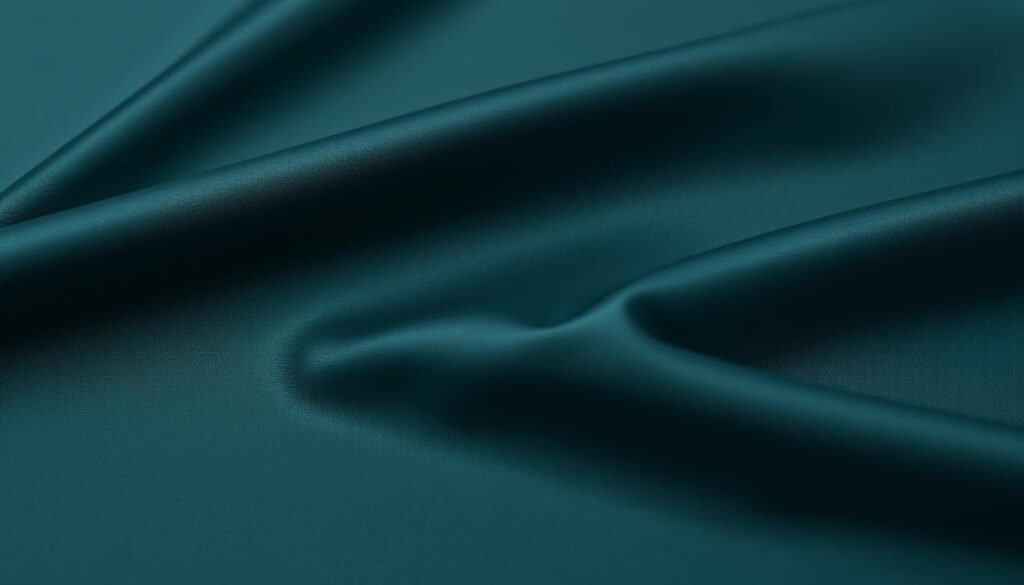
Performance Characteristics of Synthetic Shirts
Synthetic shirts, particularly those made from polyester, are known for their durability and ease of maintenance. They are often less prone to wrinkles and can withstand repeated washing without losing their shape. Moisture-wicking properties are another significant advantage, making them suitable for active wear.
Environmental Considerations
While synthetic fabrics offer several benefits, their environmental impact is a concern. The production of polyester and other synthetics involves non-renewable resources and can contribute to microplastic pollution. However, efforts are being made to develop more sustainable production methods and recycling technologies.
“The development of sustainable synthetic fabrics is crucial for reducing the environmental footprint of the textile industry.”
Blends and Innovations in Synthetic Fabrics
Synthetic fabrics are often blended with natural fibers to create materials that combine the best properties of both. For instance, a cotton-polyester blend can offer the comfort of cotton along with the durability of polyester.
Moisture-Wicking Technologies
One of the significant innovations in synthetic fabrics is the development of moisture-wicking technologies. These fabrics draw sweat away from the skin, enhancing comfort during physical activities.
Wrinkle and Stain Resistance Advancements
Advancements in fabric technology have also led to improved wrinkle and stain resistance. Treatments and finishes can be applied to synthetic fabrics to make them more resistant to wrinkles and stains, reducing the need for frequent ironing and cleaning.
| Fabric Type | Durability | Moisture-Wicking | Wrinkle Resistance |
|---|---|---|---|
| Polyester | High | Yes | High |
| Cotton-Polyester Blend | Medium-High | Partial | Medium |
Wool and Flannel: Cold Weather Options
Wool and flannel are two fabrics that stand out for their ability to keep you warm during the colder months. When it comes to braving the chill, the right fabric can make all the difference in your comfort and style.
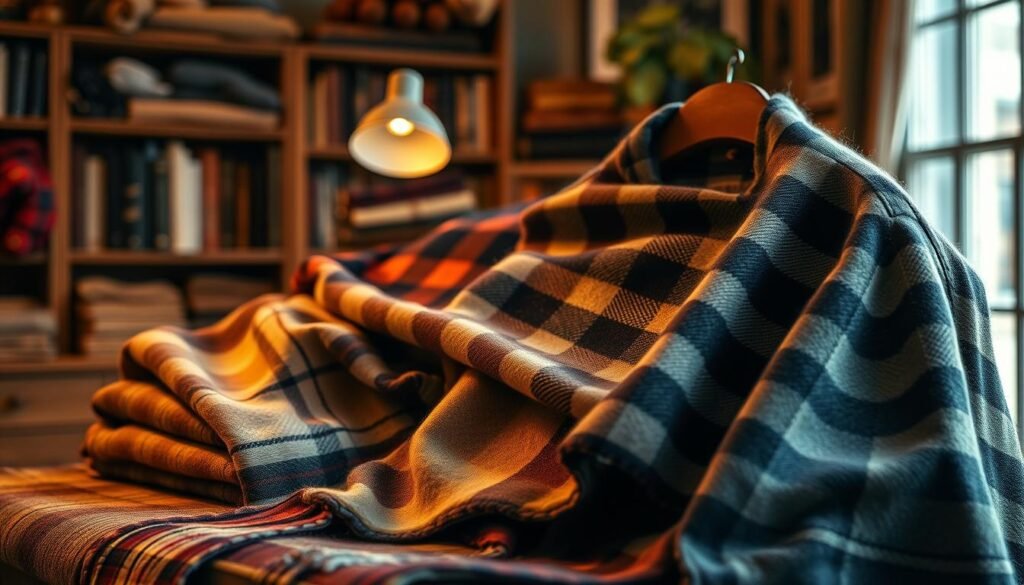
Insulation Properties and Comfort Factors
Wool is renowned for its excellent insulation properties. It traps warm air close to the skin, keeping you cozy even in freezing temperatures. Flannel, often made from cotton or wool, is brushed to create a soft, fuzzy surface that enhances warmth. Both fabrics are comfortable against the skin, with wool offering additional benefits like breathability and moisture-wicking properties.
“Wool is a natural insulator, making it perfect for cold weather clothing,” as noted by textile experts. Its ability to retain warmth even when wet is a significant advantage over other fabrics.
Merino Wool vs. Traditional Wool Shirts
Merino wool shirts are gaining popularity due to their superior comfort and performance. Unlike traditional wool, Merino wool is finer, softer, and less itchy. It also offers better temperature regulation and moisture management. However, traditional wool shirts are still valued for their durability and classic appeal.
- Merino wool: Softer, finer, better temperature regulation
- Traditional wool: Durable, classic appeal, potentially itchier
Care and Maintenance Guidelines
To extend the life of your wool and flannel shirts, proper care is essential. Hand washing or using a gentle cycle with cold water is recommended. Avoid wringing or twisting the fabric; instead, gently reshape the shirt while it’s damp. For flannel shirts, avoid high heat when drying to prevent shrinkage.
By choosing wool or flannel shirts and following the right care guidelines, you can enjoy warm, comfortable clothing throughout the cold weather season.
Bamboo and Sustainable Fabrics: Eco-Friendly Choices
Sustainable fabrics, particularly bamboo, are revolutionizing the fashion industry with their unique blend of comfort and eco-friendliness. As you look for the best shirt fabrics to wear, considering the environmental impact is crucial.
Environmental Benefits of Plant-Based Fabrics
Bamboo fabric stands out for its eco-friendly production process. It requires less water and pesticides compared to traditional cotton, making it a more sustainable option. The cultivation of bamboo also contributes to soil health and biodiversity.
Comfort and Performance Characteristics
Bamboo shirts are known for their breathability, moisture-wicking properties, and softness. These shirt fabric characteristics make bamboo an excellent choice for comfort and performance. Bamboo fabric is also hypoallergenic and gentle on the skin.
Limitations and Considerations
While bamboo fabric offers numerous benefits, it also has some limitations. The production process can be energy-intensive, and the fabric may require special care. Understanding these factors will help you make informed choices about incorporating bamboo shirts into your wardrobe.
By choosing bamboo and other sustainable fabrics, you’re not only enhancing your comfort but also contributing to a more environmentally friendly fashion industry.
Learn About Shirt Fabrics Through Practical Testing
To truly understand shirt fabrics, we put them to the test in real-world conditions. By doing so, we can provide you with a comprehensive understanding of how different materials perform.
Our Wear Test Methodology
Our testing process involved a multi-faceted approach to evaluate shirt fabrics under various conditions. We considered factors such as daily wear and tear, wash cycle impacts, and comfort levels in different environments.
Daily Wear Observations
During daily wear, we observed how fabrics like cotton, linen, and polyester performed. Cotton proved to be comfortable, while linen stood out for its breathability.
Wash Cycle Impact Assessment
We assessed how different wash cycles affected the fabrics. The results showed that synthetic fabrics generally withstood washing better than natural fibers.
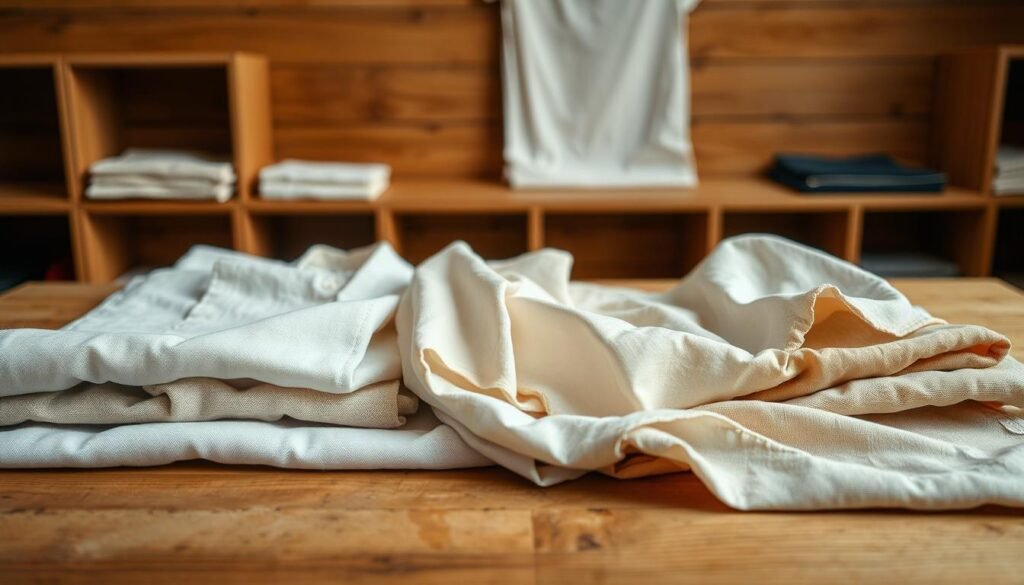
Comfort Ratings Across Different Environments
Comfort is a crucial factor when choosing a shirt. Our tests revealed that linen and bamboo fabrics were particularly comfortable in warm conditions, while wool excelled in colder climates.
Durability and Longevity Findings
Our durability tests showed that polyester blends and supima cotton were more resistant to wear and tear. The table below summarizes our findings:
| Fabric Type | Comfort Rating | Durability Score |
|---|---|---|
| Cotton | 8/10 | 7/10 |
| Linen | 9/10 | 6/10 |
| Polyester | 7/10 | 9/10 |
By understanding the strengths and weaknesses of different shirt fabrics, you can make informed decisions about your wardrobe choices.
Fabric Blends: Getting the Best of Multiple Materials
Shirt fabric blends are engineered to capitalize on the strengths of different materials, offering you a versatile and often superior alternative to single-fabric shirts. By combining fabrics, manufacturers can create shirts that are more durable, comfortable, and suitable for a wider range of activities and environments.
Common Blend Ratios and Their Benefits
The ratio at which different fabrics are blended can significantly impact the final product’s characteristics. For instance, a blend that is 60% cotton and 40% polyester is common, as it balances the breathability of cotton with the durability of polyester. Such blends are popular for casual wear because they are easy to care for and maintain their shape well.
Cotton-Polyester: The Popular Hybrid
Cotton-polyester blends are among the most common fabric blends used in shirts. They offer a good balance between comfort, durability, and affordability. You can expect these shirts to be resistant to wrinkles and easy to maintain, making them suitable for daily wear.
Specialty Blends for Specific Needs
Some fabric blends are designed with specific needs in mind, such as athletic wear or work uniforms. For example, blends that include spandex offer enhanced flexibility, while those with moisture-wicking properties can keep you dry during intense activities.
- Durability
- Easy care
- Affordability
- Wrinkle resistance
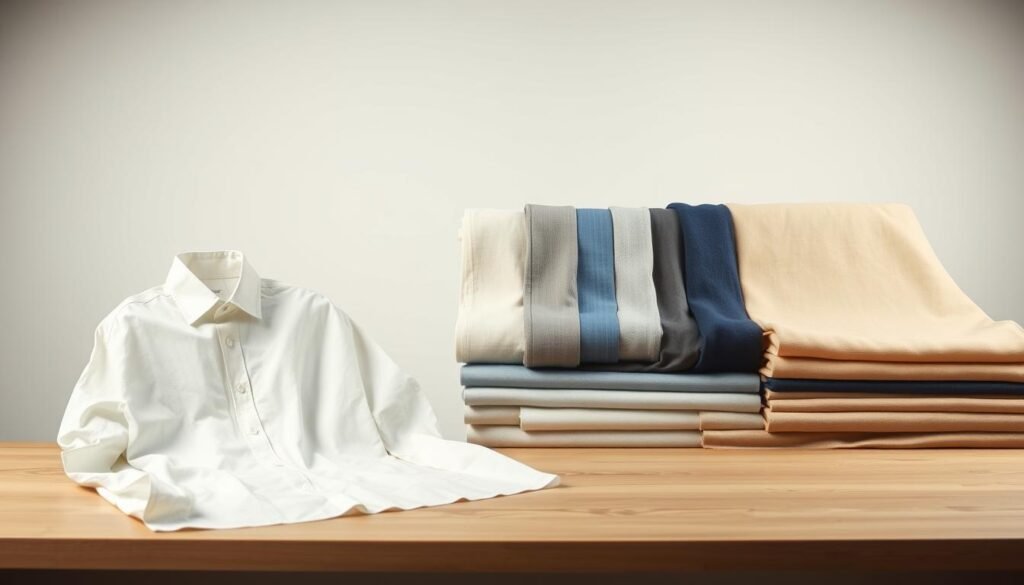
Performance Analysis: How Fabrics Function in Different Settings
Understanding how different shirt fabrics perform in various environments is crucial for making informed wardrobe choices. The functionality of a shirt is significantly influenced by its fabric, whether you’re in a professional setting, engaging in casual wear, or participating in athletic activities.
Professional Environment Performance
In a professional environment, fabrics like cotton and linen are often preferred due to their breathability and comfort. Cotton is particularly popular for its versatility and ease of maintenance. For instance, a cotton shirt can be suitable for a business casual setting, while a linen shirt might be more appropriate for a formal event during warmer months.
Casual and Everyday Wear Results
For casual and everyday wear, synthetic fabrics and blends are commonly used due to their durability and ease of care. However, natural fibers like cotton remain a favorite for their comfort and breathability. Moisture-wicking fabrics are also gaining popularity for their ability to keep the wearer cool and dry.
Formal Occasion Suitability
For formal occasions, fabrics like silk and high-quality cotton are often chosen for their aesthetic appeal and comfort. Silk, in particular, adds a touch of luxury to any outfit. The table below summarizes the suitability of different fabrics for various occasions:
| Fabric Type | Professional | Casual | Formal |
|---|---|---|---|
| Cotton | Yes | Yes | Yes |
| Linen | Yes | Yes | Yes |
| Silk | No | No | Yes |
| Synthetic | No | Yes | No |
Athletic and Active Use Considerations
For athletic and active use, fabrics that offer moisture-wicking properties and breathability are essential. Synthetic fabrics and technical blends are often used in activewear due to their performance characteristics.
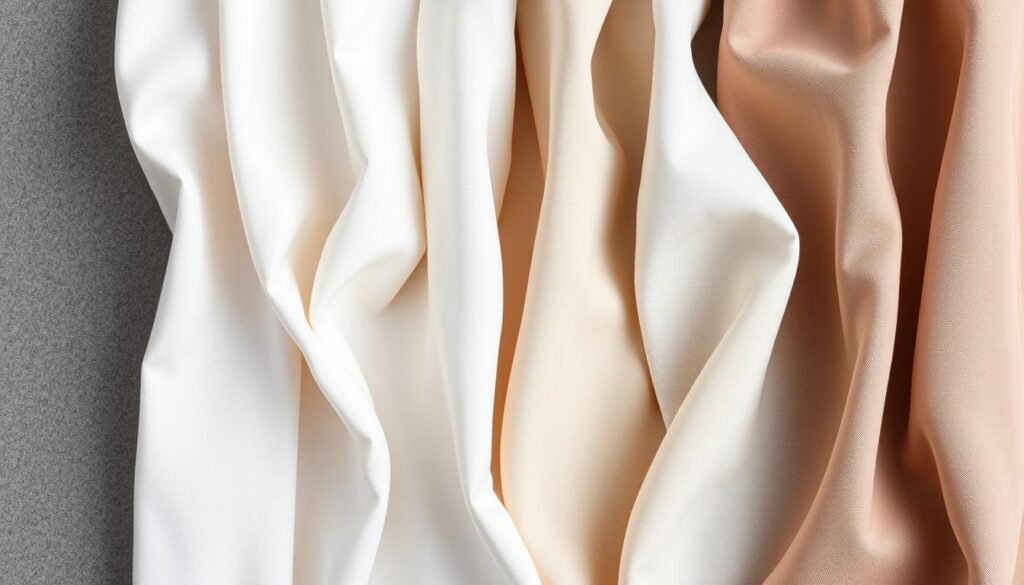
By understanding how different fabrics perform in various settings, you can make more informed decisions about your shirt material options, ensuring you choose the best fabric for your needs.
Seasonal Fabric Selection: Matching Materials to Weather
Understanding the best shirt fabrics to wear across different seasons is key to a versatile wardrobe. As the weather changes, so do your needs for comfort, durability, and style.
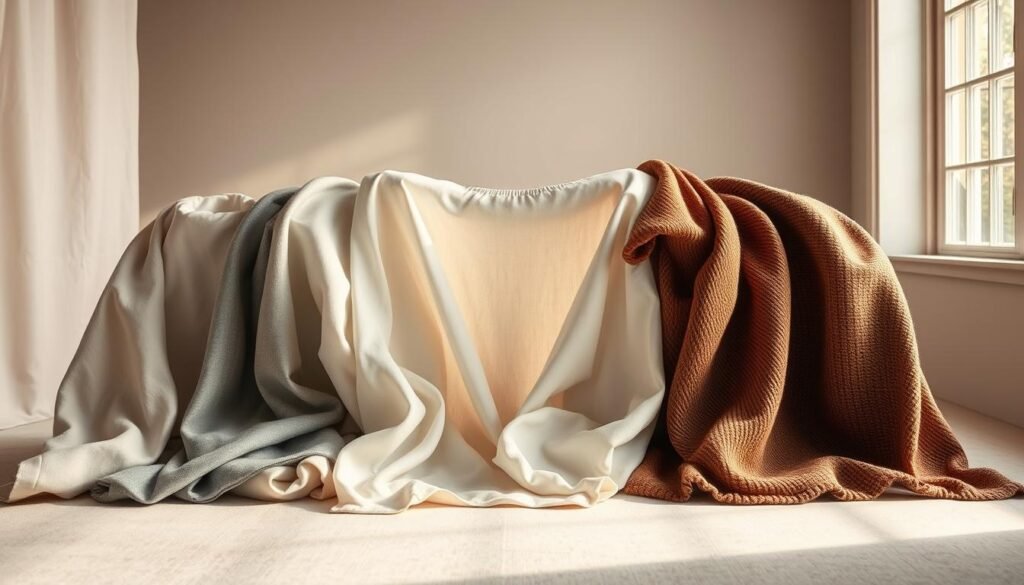
Summer Fabric Recommendations
For summer, lightweight and breathable fabrics are essential. Cotton and linen are top choices due to their natural cooling properties and ability to keep you dry. Linen, in particular, is known for its exceptional breathability and is ideal for hot weather.
Winter and Cold Weather Options
In contrast, winter calls for warmer, thicker fabrics that provide insulation. Wool and flannel are excellent choices for cold weather, offering both warmth and comfort. Merino wool, with its fine fibers, is particularly noted for its temperature regulation and moisture-wicking properties.
Transitional Season Fabric Choices
During the spring and autumn, versatile fabrics that can adapt to changing temperatures are valuable. Blends of cotton with synthetic fibers or bamboo can offer a balance between comfort, durability, and temperature regulation, making them suitable for transitional seasons.
By choosing the right shirt fabric for the season, you can enhance your comfort and expand your wardrobe’s versatility. Understanding different shirt fabrics and their properties is the first step in making informed decisions.
Fabric Care and Maintenance: Extending Shirt Lifespan
To keep your shirts looking their best, it’s essential to follow specific care and maintenance guidelines tailored to their fabric. Different materials have unique needs, and understanding these can significantly extend the life of your shirts.
Caring for Your Shirts: Washing and Drying Best Practices
Washing and drying are critical steps in shirt maintenance. For cotton shirts, machine washing in cold water with a mild detergent is recommended. Delicate fabrics like silk or wool require hand washing or a delicate cycle. It’s also crucial to check the care label for specific instructions.
When it comes to drying, not all fabrics can withstand high heat. Cotton and polyester blends can usually be tumble dried on a low setting, while linen and silk shirts are best air-dried to prevent shrinkage and damage.
| Fabric Type | Washing Method | Drying Method |
|---|---|---|
| Cotton | Machine wash cold | Tumble dry low |
| Linen | Machine wash cold | Air dry |
| Silk | Hand wash cold | Air dry |
| Polyester | Machine wash cold | Tumble dry low |
Effective Stain Removal Techniques for Various Fabrics
Stains can be a significant challenge, but different fabrics require different approaches. For protein-based stains like blood, cold water and enzyme-based detergents are effective. Oil-based stains on cotton or linen can be treated with baking soda or talcum powder before washing.
Storage Solutions to Keep Your Shirts Fresh and Prevent Damage
Proper storage is key to maintaining your shirts. Breathable storage bags or cloth storage cubes can help prevent moisture buildup. For delicate fabrics, consider using acid-free tissue paper to prevent discoloration.
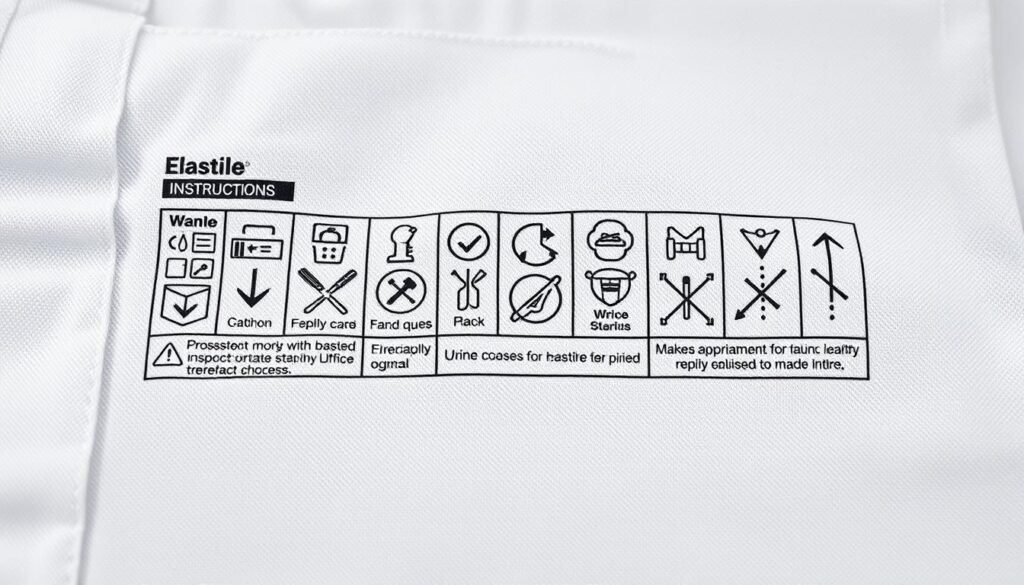
Making the Right Fabric Choice for Your Lifestyle and Needs
Choosing the right shirt fabric can significantly impact your comfort and style. With various options available, understanding different shirt fabrics is crucial. Consider your lifestyle, needs, and preferences when selecting a shirt material.
For everyday wear, cotton and cotton blends are popular due to their breathability and durability. If you live in a warm climate, linen shirts are an excellent choice for their cooling properties. For formal occasions or colder weather, silk and wool shirts offer luxury and warmth.
When deciding on a shirt fabric, consider factors such as maintenance, durability, and environmental impact. A fabric guide for shirts can help you navigate these choices. For instance, synthetic fabrics like polyester are easy to care for but may have a larger environmental footprint.
Ultimately, the best shirt fabric for you will depend on your specific needs. By understanding shirt material options and considering your lifestyle, you can make informed decisions that enhance your wardrobe and overall comfort.





